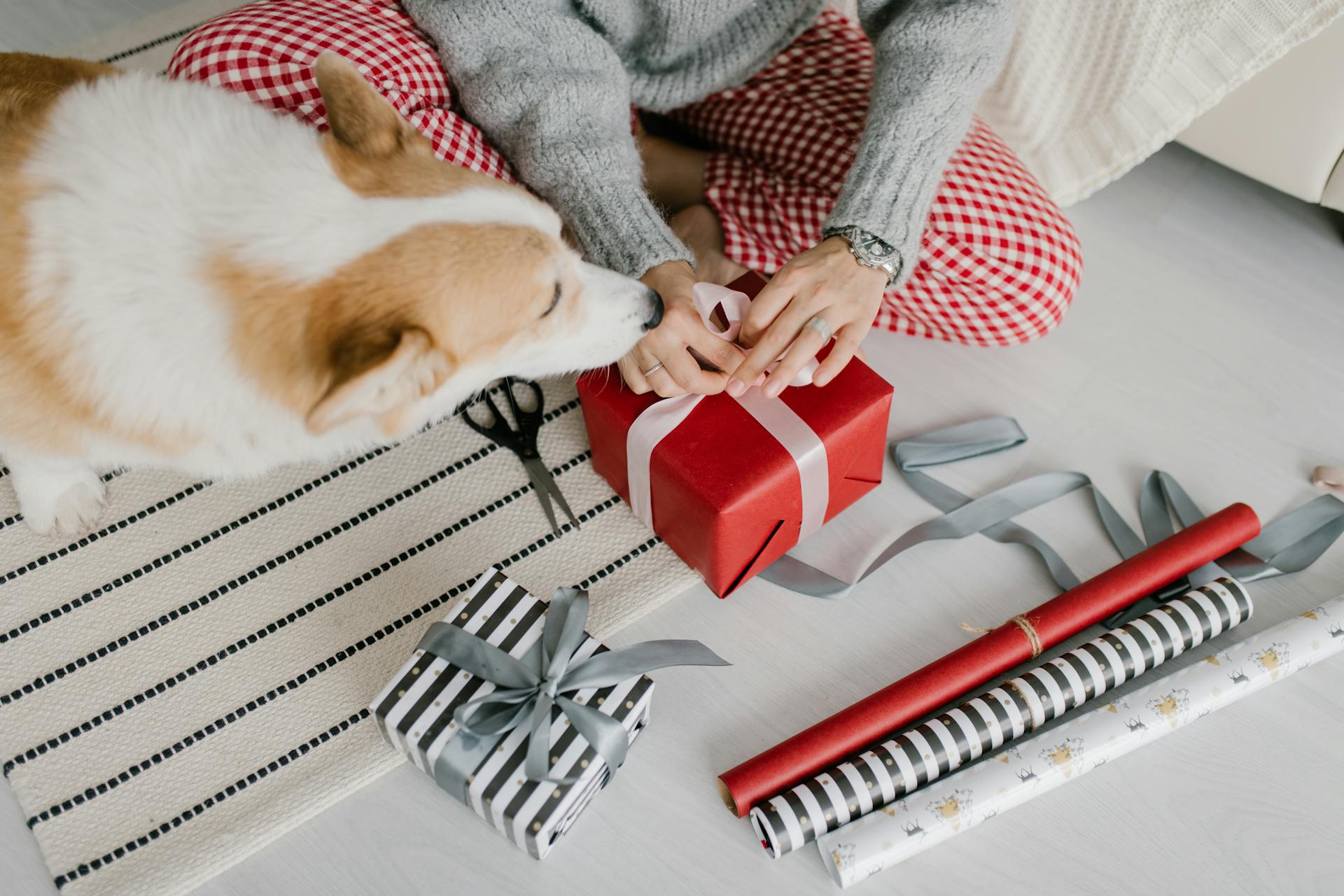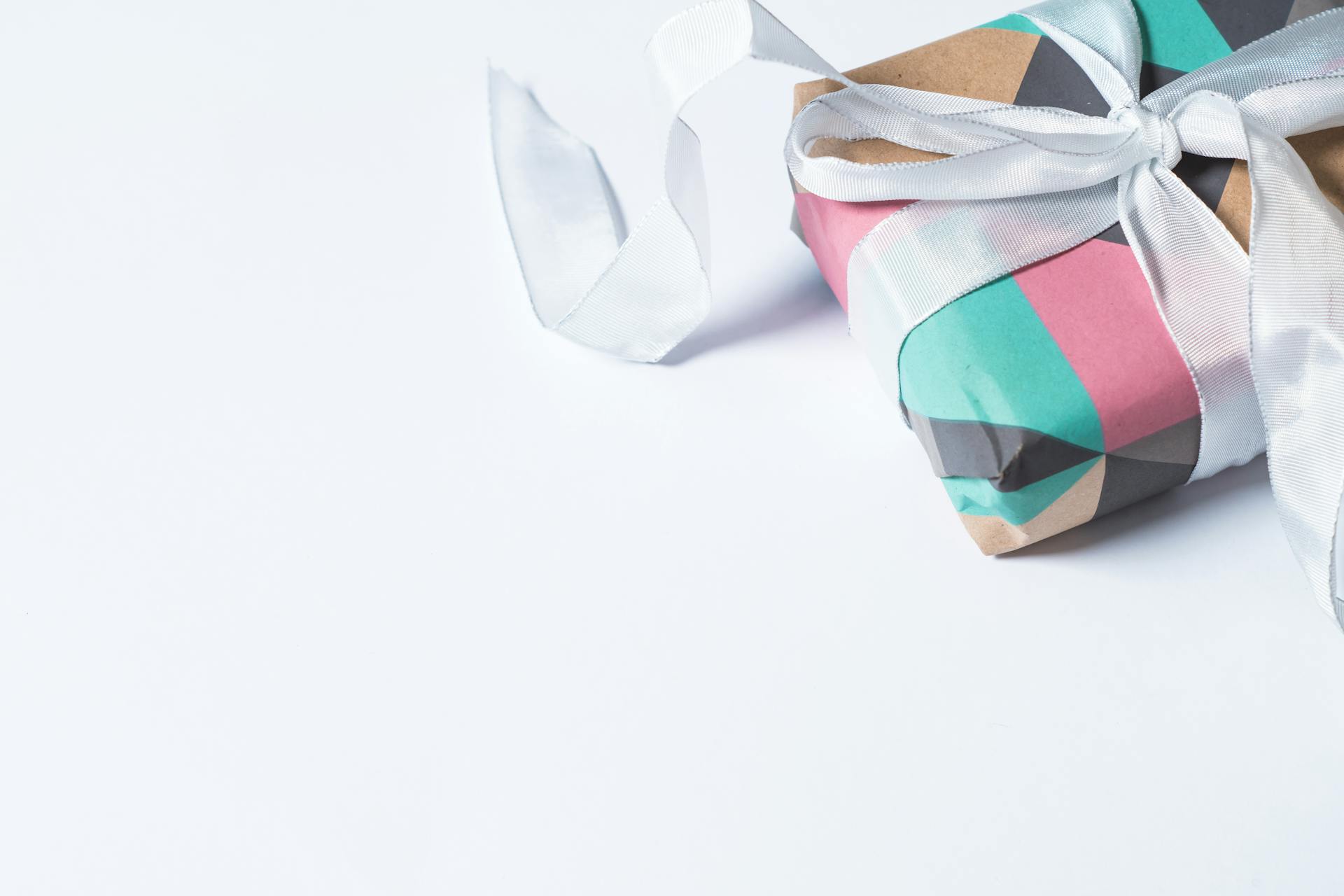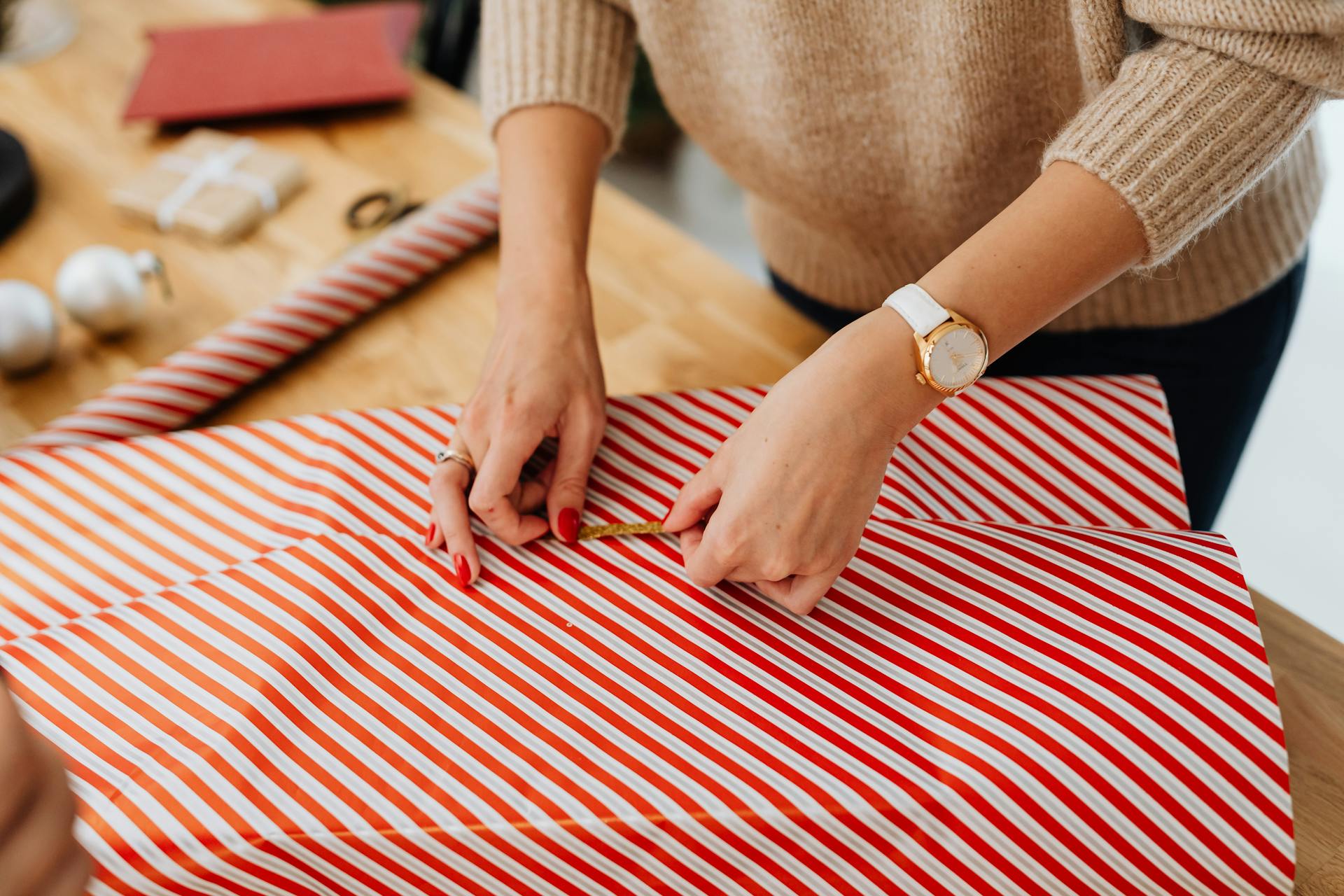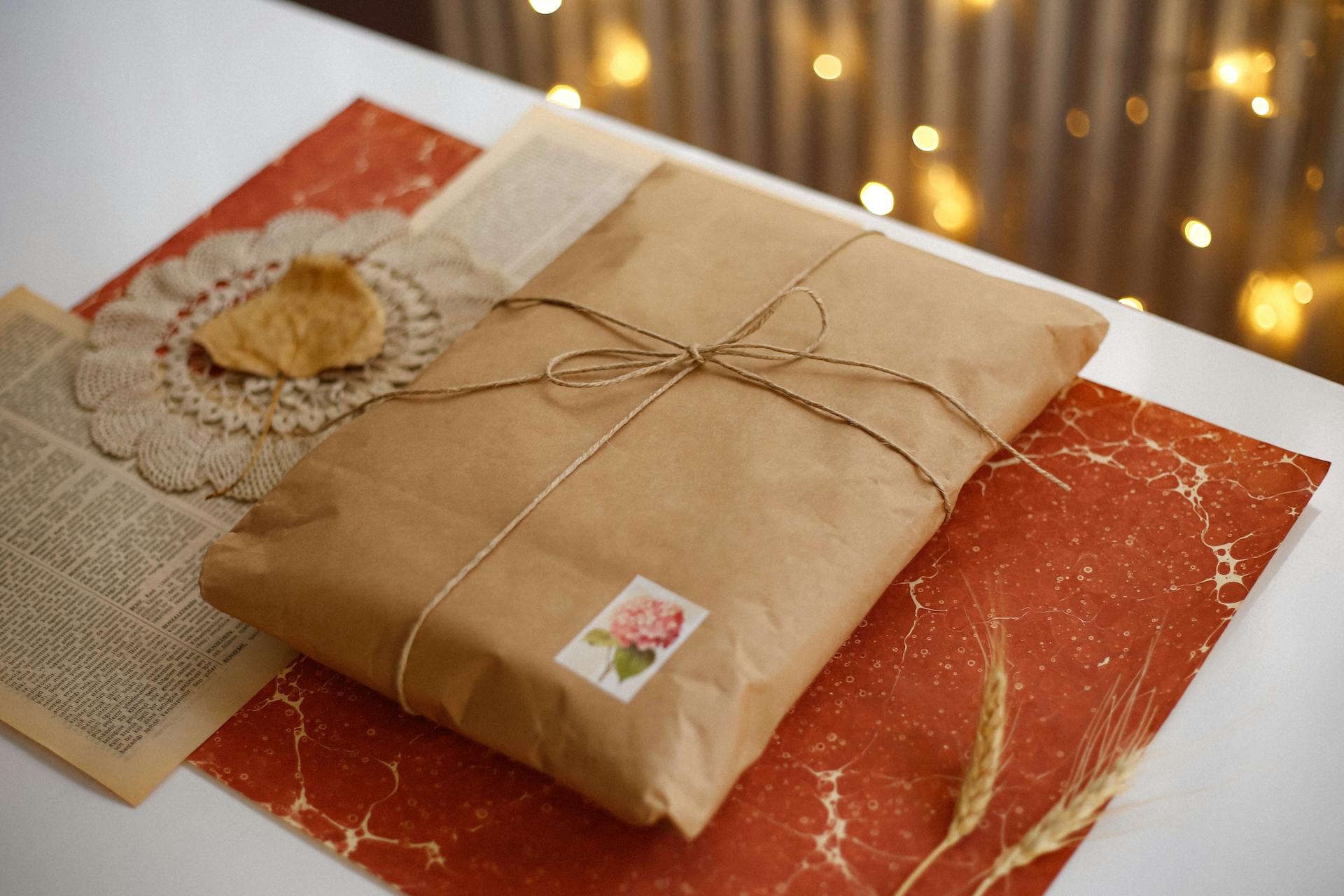
Furoshiki gift wrap is a traditional Japanese technique that's been around for centuries. It's a beautiful way to wrap gifts without using any tape or ribbons, instead using a square piece of cloth to create a stunning and eco-friendly presentation.
The cloth used for furoshiki gift wrap is typically made of silk or cotton, and it's usually a square shape to make it easier to wrap. This square shape also allows for a lot of creative freedom when it comes to designing the pattern and color of the cloth.
One of the best things about furoshiki gift wrap is that it's incredibly versatile. You can use it to wrap all sorts of gifts, from small items like jewelry or candles to larger items like books or kitchen gadgets.
Getting Started
To get started with furoshiki gift wrap, experiment with different fabrics to find the right size and weight for your gifts. Cut your fabric accordingly, and don't be afraid to try out various wrapping styles.
Not sure what size to use? Start with a bandana, napkin, or muslin fabric to help you decide how much coverage you need. This will give you a good idea of the scale and proportions of your gift.
The weight of your fabric will indeed influence how neat your ties and wraps will look. Lightweight fabrics like chiffon are perfect for wrapping big, soft pillows, while heavier fabrics like Celosia Velvet are great for making a statement.
Don't worry if you don't have a box – furoshiki gift wrap is all about creativity and personality. You can add extra padding with lush fabrics like Celosia Velvet to make your gift look extra special.
Remember, the possibilities are endless, and you can incorporate your wrap into your gift in many different ways. Use a baby blanket to wrap a baby gift, or a swatch to wrap a pair of earrings.
Techniques and Methods
Furoshiki gift wrapping is all about using a square piece of fabric to wrap and secure items in a way that's both practical and beautiful.
There are various techniques to master, but one of the most traditional is the Side-by-Side Bow method, which is also a traditional bento box fold.
To try this method, lay out your gift on the diagonal of your fabric, print side down, and take two diagonal corners and start by tying them once toward one corner of your box.
You can also use this method to wrap almost anything, as it's a versatile and go-to wrap.
To create a beautiful and secure wrap, start by centering your item and then folding the fabric, which is where the magic of furoshiki really starts to show.
Remember, you don't need any tape, ribbons, or scissors to create a stunning furoshiki gift wrap – just a bit of fabric and some creativity.
Side-by-Side Bow Method
The Side-by-Side Bow Method is a classic technique for wrapping gifts. This method is a traditional bento box fold.
To start, lay out your gift on the diagonal of your fabric, print side down. This will ensure that the print is hidden from view.
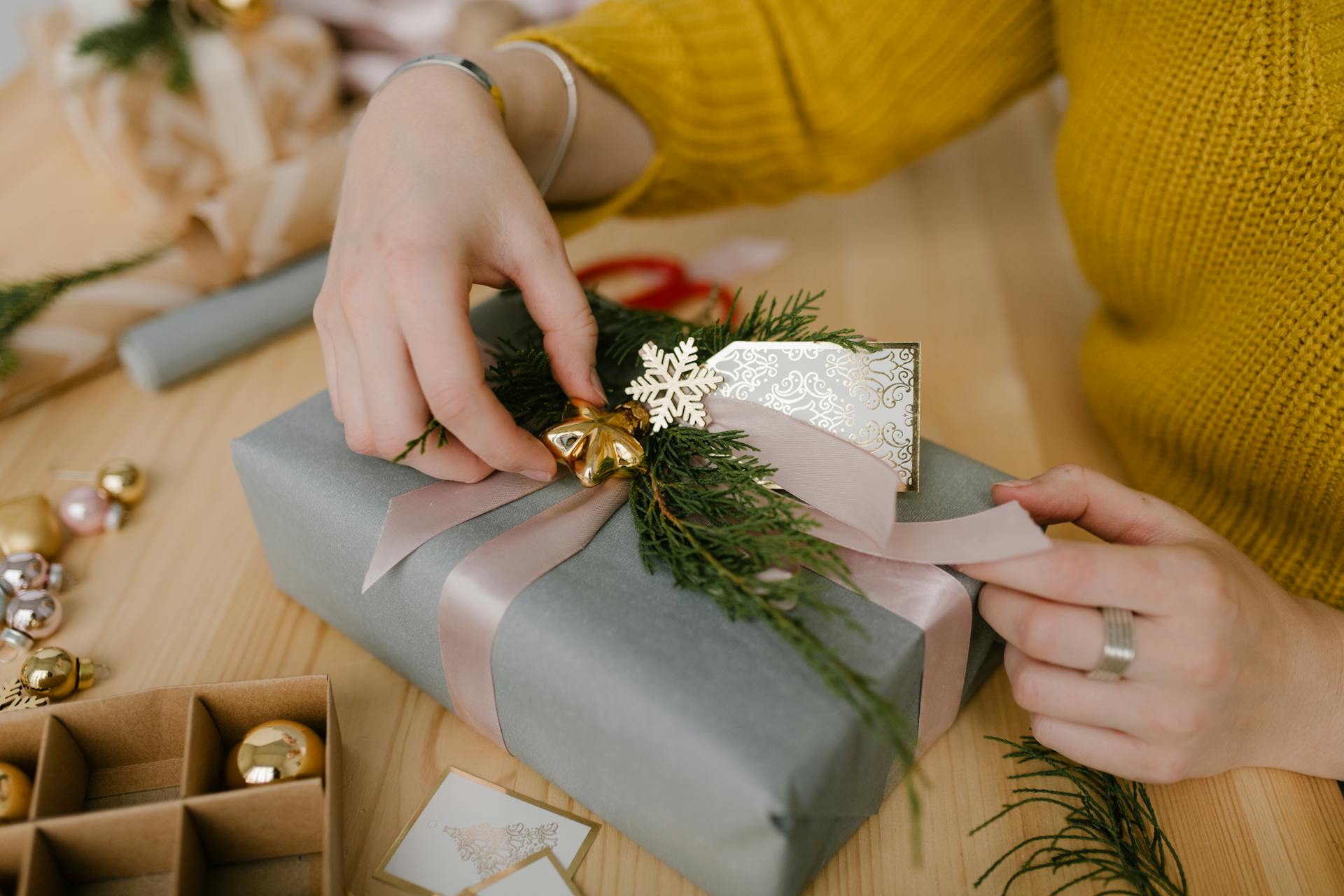
Take two diagonal corners and start by tying them once toward one corner of your box. This is the foundation of the side-by-side bow.
Take the remaining two corners and tie them together twice. This creates a secure knot that will hold the bow in place.
You can then reach under the knot you just tied to take hold of the first tie you started with. This allows you to tie the second knot right next to the first one.
Tie once again, right next to the other knot, so they sit side-by-side on top of your gift. This creates a neat and tidy bow.
Pro tip: Tuck the corners of the excess fabric into the sides to make them look like little bows. This adds a finishing touch to your gift wrapping.
Step-by-Step Guide
To create a beautiful and secure furoshiki wrap, follow these steps. Start by placing your item in the center of the cloth, aligned with the corners.
For the Otsukai Tsutsumi (Simple Wrap), fold the two opposite corners over the item, letting them overlap in the middle. This method is a great way to wrap items like a baby hat, leggings, and shoes.
To ensure the fabric is snug against the item, fold one corner of the fabric over the item, and covering it completely, then fold the opposite corner over, so the two edges overlap in the center of your item. This is especially important when wrapping with the Yotsu Musubi (Four-Tie Wrap) method.
You can also try the Side-by-Side Bow method, which is a traditional bento box fold. To do this, lay out your gift on the diagonal of your fabric, print side down, and then tie two diagonal corners together once toward one corner of your box.
Here are some key things to keep in mind when tying the knots:
- For the Simple Wrap, tie the two overlapping corners into a tight knot on top of the item.
- For the Four-Tie Wrap, tie the two ends from the first fold together in a tight knot, then do the same with the ends from the second fold.
- For the Bottle Wrap, tie two opposite corners up and over the bottle's top, then wrap the remaining two corners around the base of the bottle and tie another knot in front.
By following these steps and techniques, you'll be able to create beautiful and secure furoshiki wraps that are perfect for gifts or everyday use.
Choosing the Right Fabric
Choosing the right fabric for your furoshiki gift wrap is crucial. It's the whole cake, not just the icing on top. The fabric you choose will make or break your wrap.
The classic go-to fabric for furoshiki is cotton, and for good reason. It's versatile, easy to handle, and comes in a ton of patterns and colors. Organic cotton takes it a step further, ensuring that the fabric is grown without harmful pesticides or chemicals.
Bamboo fabric is another great option. It's incredibly soft, with a silky feel and a slight sheen that adds a touch of luxury to your wrap. Plus, it's naturally antibacterial, making it perfect for wrapping food items or gifts that might be handled a lot.
For a more sustainable option, look for fabrics made from recycled materials, like PET bottles or old textiles. These fabrics give new life to materials that would otherwise end up in landfills, and they often come in funky patterns.
Prepping Fabric
Cutting off the selvage with fabric scissors is a great way to prep your fabric for furoshiki wrapping. This will give you a clean edge and prevent any fraying.
Folding the fabric in half diagonally to make a triangle is a clever trick to help you cut out the right shape. This method is especially useful for wrapping a book or flat box.
For smaller gifts, you can use fat-quarter-sized pieces of fabric, which are perfect for furoshiki wrapping.
A different take: Wine Bottle Wrapping Paper
2. Yotsu Musubi
Choosing the right fabric for your musubi is crucial, and one style that's a bit more involved is the Yotsu Musubi. This style requires a bit more fabric and technique, but the end result is well worth it.
To start, position your item diagonally in the center of the fabric. The fabric should be large enough to wrap around your item twice, with some extra room to tie a knot.
Folding the top and bottom corners over the item is the next step, and it's essential to make sure they meet in the middle. This will create a solid foundation for the rest of the wrap.
Tying the corners into a knot is a bit tricky, but with practice, you'll get the hang of it. The knot should be snug and secure to keep your item in place.
To finish the wrap, take the remaining corners and tie them over the first knot. This will create a stylish knot on top and ensure your item is securely wrapped.
Best Fabric Size
Choosing the right fabric size is crucial for a great furoshiki gift wrap. The general rule is that your fabric should be roughly three times the size of the item you're wrapping.
For a small item like a book, a 50cm x 50cm cloth is a good starting point. This size will give you enough fabric to cover the gift without too much excess.
A larger item, like a box or a bottle, may require a fabric size closer to 70cm x 70cm or even larger. This will help you wrap the item securely without too much extra fabric.
Creative Ideas and Inspiration
Furoshiki gift wrap is a unique and eco-friendly way to present your gifts. You can get creative with how you present your presents, making the holiday season a perfect time to show off your furoshiki wrapping skills.
To make your furoshiki gifts stand out under the tree, consider using a solid-color fabric and decorating it yourself with fabric paint, stamps, or embroidery. Personalize it with the recipient's name, a favorite quote, or a special design that's meaningful to them.
The personalization adds an extra layer of thoughtfulness, showing that you've put time and effort into not just the gift, but the presentation as well. This idea works for any gift and is especially meaningful for close friends or family members.
Here are some techniques you can use to create a personalized furoshiki wrap:
- Choose a furoshiki technique depending on the shape and size of the gift.
- Use the wrap again and again, making it a thoughtful and reusable gift.
Tips and Guides
Furoshiki gift wrap is a unique and eco-friendly way to present gifts.
To get started, choose a square piece of cloth, ideally made of cotton or silk, with a size of at least 27 inches to 36 inches.
Keep in mind that the size of the cloth will affect the wrapping style and the size of the gift that can be wrapped.
A good rule of thumb is to use a square cloth that is at least 1.5 times the size of the gift.
Final Touches
Tuck in those edges neatly to create a smooth finish. Make sure the fabric lies flat against the item for a professional look.
You can adjust the knots to make them look more polished or add a decorative element. Consider adding a small charm or a sprig of greenery to the knot for a personal touch.
Adding a reusable gift tag can elevate your furoshiki wrap from simple to stunning. A small charm or a sprig of greenery can make a big difference in the overall look.
These little details can make your furoshiki wrap as thoughtful as the gift inside. With a few simple adjustments, you can create a beautiful, eco-friendly wrap that's perfect for any occasion.
Final Thoughts
It's time to get creative with your gift-giving.
Furoshiki gift-wrapping is a zero-waste technique that's perfect for the holiday season.
Make sure to repurpose your supplies, as what is old is new again.
Furoshiki wrapping ideas can be used for Christmas gifts to dazzle your friends and family.
Remember to have FUN with the process, and enjoy experimenting with different techniques and ideas.
Maintenance and Care
To keep your furoshiki gift wrap looking its best, it's essential to store it properly. Fold it neatly and place it in a dry, cool spot away from direct sunlight.
The fabric can be washed if needed, but it's recommended to spot clean any stains with a mild detergent and cold water.
To prevent wrinkles, iron your furoshiki on a low heat setting, taking care not to scorch the fabric.
Regularly washing and ironing your furoshiki can help extend its lifespan.
Why Furoshiki
Furoshiki gift wrap is a sustainable and thoughtful way to give presents. It's estimated that the United States produces 4.6 million pounds of wrapping paper every year, with half of that ending up in landfills.
Using furoshiki can make a significant impact on reducing waste. If every American family wrapped just 3 presents in reused materials, it would save enough paper to cover 45,000 football fields.
The beauty of furoshiki lies in its versatility. Once unwrapped, a furoshiki can be used in a variety of everyday ways, such as a table linen, fashion accessory, or even framed and hung on a wall.
Here are some creative ways to reuse a furoshiki:
- Table linen
- Fashion accessory
- Wall hanging
Each furoshiki is lovingly designed by Japanese-American artist Keiko Kira, inspired by her childhood growing up in Japan and the seasonal colors in nature.
Frequently Asked Questions
What is the difference between Bojagi and furoshiki?
Bojagi and Furoshiki differ in their visual and cultural approaches, with Bojagi featuring bold colors and intricate patterns, and Furoshiki emphasizing simplicity and sustainability. This contrast reflects their distinct cultural origins and design philosophies.
Sources
- https://blog.spoonflower.com/2019/11/06/6-ways-to-wrap-a-gift-with-furoshiki/
- https://wrappr.com/collections/furoshiki-gift-wrap
- https://keikofuroshiki.com/products/furoshiki-wrap
- https://kimandono.com/en-is/pages/furoshiki-gift-wrap
- https://greenchoicelifestyle.com/furoshiki-gift-wrapping-techniques-ideas/
Featured Images: pexels.com
